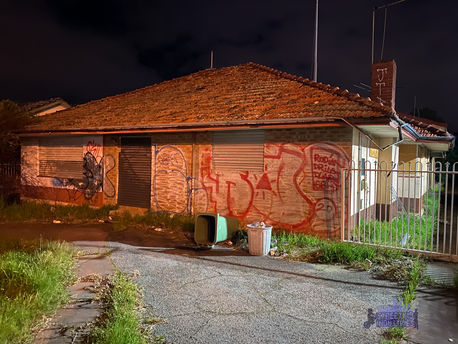Applecross Radio Teleservice
Australian inventor of the Slow-Scan Television
It’s disheartening to think that the legacy of Eric Samek, the Australian inventor of Slow-Scan Television, has largely faded into obscurity. Regardless of whether you’re passionate about radio technology or its modern applications, his contribution was groundbreaking — and his name deserves to be remembered.
Although most property websites list 842 Canning Highway, Applecross as having been built in 1963, aerial photographs from March 1961 already show the house established on the site. Originally built as a single-storey brick and tile residence positioned towards the front of the block, the house was later extended with a second storey and additions to the rear. These changes appear to have been carried out sometime between June 1983 and June 1985.
With these extensions complete, the residence featured nine bathrooms, two bedrooms and 10 car bays. Around this time, the residence was recorded as having been converted for commercial use, likely occupying the front portion of the house on the ground floor.
1980s–2000s: Radio Service Business Era
For much of the late 20th century, 842 Canning Highway functioned as a radio and electronics repair workshop that was called Teleservice. Whilst a sign on the front door of the Applecross property stated they were “the longest established TV service in Australia non-stop since 1956”, very limited records can be found. One of the earliest evidence of the business dates to a 1976 advertisement in Electronics Australia magazine.
The first business name found to be registered to Eric Samek was for Teleservice, on 16 October 1980, which was cancelled on 16 October 2016 (he passed away aged 90 on 15 September 2016). Three other business names can be found:
-
Applecross T.V. Service - 17 October 1980 to 24 December 1998.
-
Canning Highway T.V. Service - 22 April 1981 to 25 June 1993.
-
A A A TV Service - 27 February 1986 to 27 February 1989.
Samek offered sales and maintenance of radios, televisions and related audio-visual equipment, which reflects the technological needs of the era.
Inventing the Slow-Scan Television
Slow-Scan Television, often shortened to SSTV, is a way of sending pictures over radio waves. Instead of transmitting moving images like a normal television, SSTV sends still pictures very slowly, one frame at a time. The signal fits into the same narrow radio bandwidth used for voice communication, which means amateur radio operators can send and receive images without special broadcast equipment.
It’s like radio combined with fax. Your voice might normally take up the channel but with SSTV, the sound waves are carefully converted into shades of light and dark, so a receiving station can reconstruct the picture. Early systems used modified televisions or simple monitors with special glowing screens that could hold an image long enough to see the full picture appear. Operators often swapped snapshots, greetings or QSL cards (proof of contact), creating a very visual kind of radio conversation.
In Australia, Eric Samek (callsign VK6ES) was one of the true pioneers of SSTV. While the first amateur experiments began in the United States in the late 1960s, Eric was among the very first to build, test and transmit SSTV equipment here. By the early 1970s, he was already recognised in the amateur radio community as the leading figure pushing this technology forward in Western Australia.
This required Samek to hold an Amateur Advanced Radio Licence, which authorised him to operate an amateur radio station under Australian and CEPT international conditions.
October 2020

2010s: Closure and Vacancy
In December 2007, a sign on the driveway in of what appeared to be a vacant house, advertised Teleservice with the slogan 'The Remote Doctor.' By then, however, it seemed the business itself had already become part of history
2020s: Redevelopment of the Site
There are a number of listings and sales for the property over the past six years:
-
Listed for sale on 14 January 2019
-
Sold for $1.1 million on 2 May 2019
-
Listed for sale on 26 June 2019
-
Listed for sale again on 1 February 2024
-
Sold on 21 May 2024 for $2.2 million
After the property changed hands in May 2019, no tenants moved in, nor any development applications appear to have been lodged. In the years that followed, the property was left neglected, repeatedly trashed and covered in graffiti.
The property changed hands again on 21 June 2024, selling for $2.2 million and delivering a strong return for the previous owner. Since then, the site has been cleared with the existing building demolished and subdivision underway. Covering approximately 1,108 m², it carries an R40/R60 mixed-residential zoning, allowing for multi-unit redevelopment.
October 2020

.png)















































